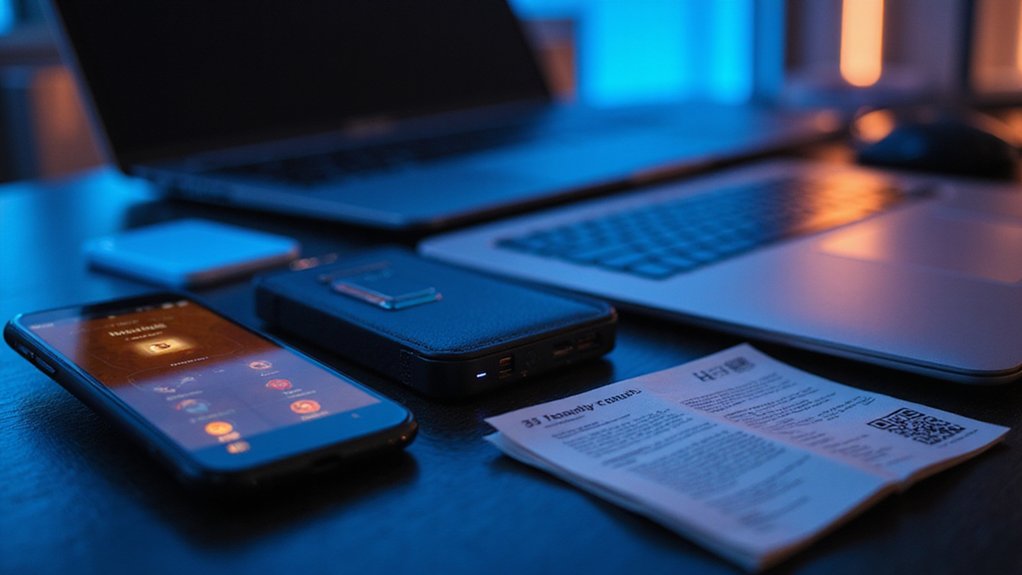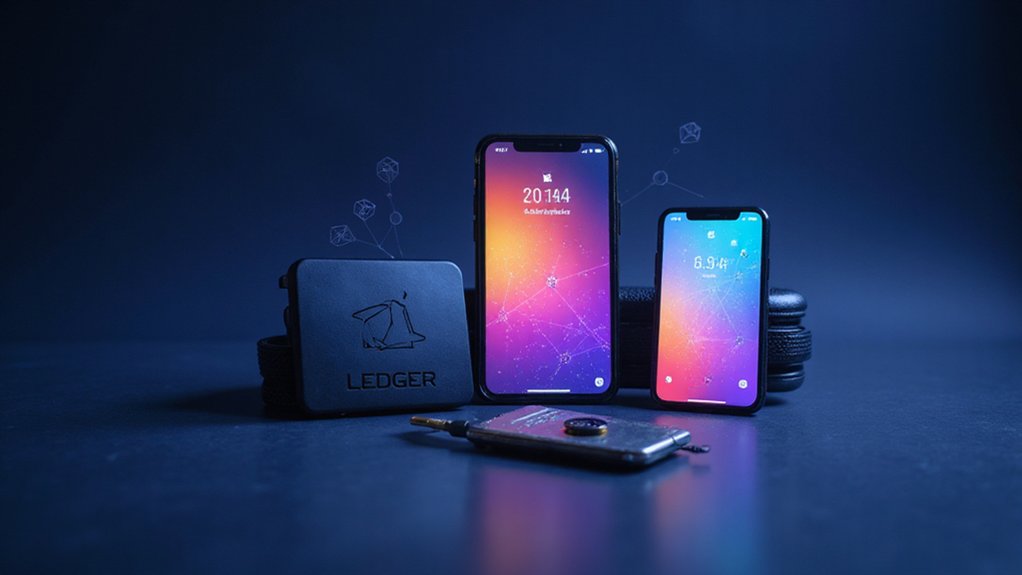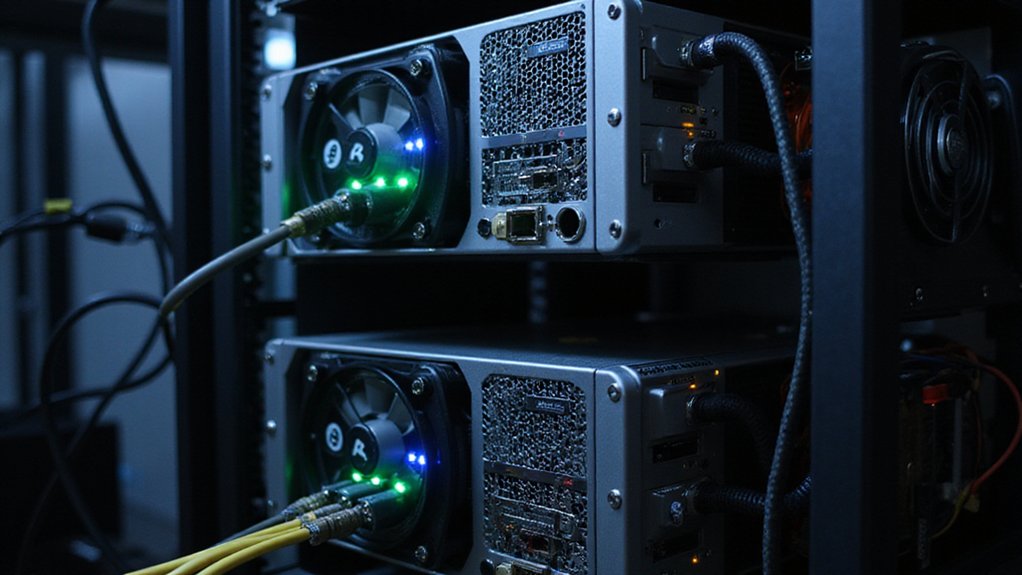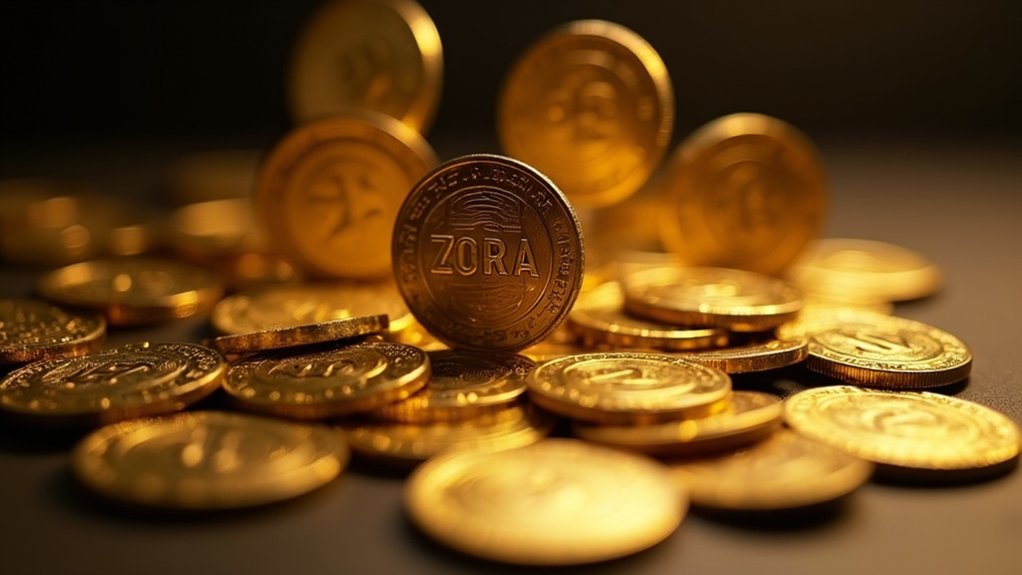Selecting a Web3 wallet—that peculiar digital accessory for our blockchain era—demands consideration of three architectural types: custodial (third-party controlled), non-custodial (self-sovereign), and smart wallets (programmable security). Newcomers might appreciate Coinbase’s training wheels, while the crypto-baptized gravitate toward MetaMask’s self-custody or hardware solutions like Ledger. The ideal choice balances security (seed phrases, biometrics), functionality (DEX integration, multi-chain support), and personal risk tolerance. The rabbit hole, naturally, extends far deeper.

Why navigate the labyrinthine world of Web3 wallets when a straightforward understanding of their fundamentals would suffice?
The crypto ecosystem presents three primary wallet architectures: custodial wallets (where third parties maintain your keys—convenient yet potentially problematic for the sovereignty-minded), non-custodial options (offering full control with commensurate responsibility), and the emerging category of smart wallets (leveraging account abstraction for programmable security policies). These wallets are designed for interacting with blockchain networks and managing digital assets without intermediaries.
Each represents a distinct philosophical approach to the eternal question: who should control your digital assets?
The essence of crypto sovereignty distilled: a fundamental divide over who wields the keys to your digital kingdom.
The market presents a spectrum of implementations across these categories.
Coinbase, Binance, and Kraken exemplify the custodial approach—ideal for neophytes still acclimating to blockchain’s peculiarities.
Meanwhile, MetaMask and Trust Wallet have established themselves as non-custodial stalwarts, their interfaces evolving toward accessibility without compromising security fundamentals. MetaMask specifically enables users to create Ethereum identities while maintaining a user-friendly approach to blockchain interactions.
For those requiring physical separation from potential network vulnerabilities, hardware wallets offer an air-gapped solution that relegates private keys to specialized devices rather than internet-connected computers (a distinction whose importance cannot be overstated in an era of increasingly sophisticated exploits).
Security implementations vary considerably across offerings.
All reputable non-custodial wallets employ seed phrases—those seemingly arcane sequences of words that constitute the skeleton key to one’s digital kingdom.
More sophisticated options incorporate biometric validation, multi-signature requirements, and automated backup protocols.
The truly discerning user might consider functionality beyond mere storage—integrated swap mechanisms, DEX aggregation, and multi-chain compatibility can substantially reduce friction in day-to-day operations.
Compatibility considerations cannot be dismissed; the most secure wallet is worthless if incompatible with one’s preferred platforms.
MetaMask and Rabby demonstrate remarkable versatility across browsers and chains, including layer-two solutions like Polygon.
Meanwhile, wallets such as Walletverse offer support for over 600 cryptocurrencies—a feature set that reflects the increasingly fragmented tokenomic landscape.
The informed selection process balances security priorities with functional requirements, acknowledging that no universal solution exists in this rapidly evolving technological domain.
Non-custodial wallets adhere to the principle of not your keys, not your coins, ensuring users maintain complete sovereignty over their digital assets.
Frequently Asked Questions
Can I Recover My Wallet if I Lose My Recovery Phrase?
Recovering a wallet without a recovery phrase presents an uphill battle—one that many crypto enthusiasts find themselves facing with predictable regularity.
Options exist, though success isn’t guaranteed: contacting support, checking cloud backups, examining old devices, or utilizing professional recovery services.
Some wallets offer alternative safeguards like multisig authentication or social recovery systems.
The cryptosphere, in its paradoxical wisdom, simultaneously delivers revolutionary financial freedom while punishing the forgetful with permanent asset loss.
Are Web3 Wallets Compatible With Traditional Banking Systems?
Web3 wallets and traditional banking systems currently operate in largely separate ecosystems with limited interoperability.
While some wallets offer fiat on/off-ramps that interface with conventional banking, true integration remains constrained by regulatory hurdles, incompatible infrastructure, and fundamentally different operating principles.
The decentralized nature of Web3 wallets—their principal virtue—is precisely what creates friction with centralized banking architecture.
Progressive institutions are exploring blockchain adoption, but complete compatibility remains aspirational rather than operational.
How Do Web3 Wallets Handle Transaction Fees?
Web3 wallets serve merely as interfaces for blockchain interactions, rather than fee collectors themselves.
Unlike traditional financial services (with their seemingly endless appetite for surcharges), these wallets simply display network-determined gas fees that fluctuate with blockchain congestion.
Users typically can customize fee levels—trading speed for economy—while advanced wallets offer optimization algorithms to minimize costs.
The true determinant of transaction expenses lies in the underlying blockchain choice; Ethereum might demand $100 during peak times, while alternatives like Solana operate for pennies.
Can I Use Multiple Web3 Wallets Simultaneously?
Yes, users can utilize multiple Web3 wallets simultaneously—a practice that offers notable diversification benefits and access to chain-specific features.
The approach, while introducing key management complexity, allows for strategic allocation of digital assets across different security architectures.
Wallet aggregation tools like Web3Auth and WalletConnect have emerged to mitigate the inevitable interface fragmentation, though users must remain vigilant about security practices (regular backups being non-negotiable) as each additional wallet expands the potential attack surface.
What Security Certifications Should I Look for in a Wallet?
Users should prioritize wallets with ISO 27001 certification (the gold standard for information security management) and SOC 2 compliance, which verifies robust operational security practices.
ISO 27701, while less common in the crypto sphere, offers additional privacy assurances worth seeking.
Regular security audits—preferably bi-annual—should be publicly documented.
The certification landscape may seem bureaucratically tedious, but these standards represent meaningful safeguards against the rather significant downside of having one’s digital assets unceremoniously liberated.









